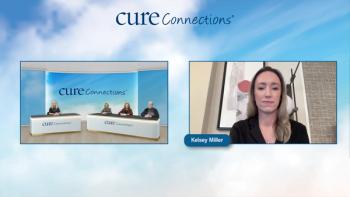
Best Practices When Testing With Comprehensive Genomic Profiling
Recommendations for selecting appropriate patients for comprehensive genomic profiling and navigating through the testing process.
Episodes in this series

Hossein Borghaei, DO, MS: At your center, when you want to do molecular testing, who’s involved in that process? What are some of the steps that you have to go through? Do you consult with a molecular pathologist to make sure you’re ordering the right thing, or is this an automated process at your centers?
Lori J. Wirth, MD: That’s a great question. First, we talk to the patients, of course, and explain why we’re doing this testing. We ask for consent from the patients as well, just in case we stumble upon an unexpected finding that could suggest a potential inherited syndrome, for example. We can extract DNA and RNA from the original thyroidectomy specimen in the pathology archives. This prevents from having to subject patients to a fresh tumor biopsy for recurrent metastatic disease when looking for options of systemic therapy. Many of the thyroidectomy specimens are old. If we cannot extract usable DNA and RNA, we have to consider doing a biopsy. Because of the frequency of identifying a potentially actionable alteration, having a biopsy specimen sent for testing is usually well worth it.
We’re familiar with many alterations in these cancers. We know the operating characteristics of the mutations or fusions. Many of us who do this often don’t necessarily need to consult with a molecular pathologist. However, even those who are doing this every day will come across variants that are foreign. Some may be driving that cancer, and others are just bystander alterations. In this instance, consulting with a molecular pathologist can be extremely useful in that situation.
Hossein Borghaei, DO, MS: Great. Ben, how do you do this?
Benjamin Levy, MD: It takes a village. It’s not just one person who does this at our center. There are a lot of steps. Dr Wirth highlighted some of these steps and potential challenges. The pulmonologist and interventional radiologist typically receive the tissue and will be ordering the next-generational sequencing [NGS] test at Hopkins [Johns Hopkins Sidney Kimmel Cancer Center], instead of the pathologist or the medical oncologist. The surgeons may also play a role in ensuring that the tissue sample is of adequate size. It’s then sent to the NGS molecular and PD-L1 lab for testing. A lung cancer navigator helps track down the results of these tests and makes sure we have them. We haven’t mentioned the whole idea of liquid; that’s a separate process that we outsource to a company. Every person—the medical oncologist, the pulmonologist, the surgeon, the pathologist, the molecular pathologist, the person who’s doing the ICs [immune cells] on the PD-L1—is thankfully located in house. And we have the results through our EMRs [electronic medical records], so we see it.
There are challenges on the back end that Dr Wirth mentioned. These results are lengthy and often complicated in terms of bioinformatics. We have to discern what variants are truly driving this cancer to grow and what’s background noise. We have molecular pathologists that run a molecular oncology tumor board for us. As knowledgeable as we may think we are as thoracic medical oncologists, sometimes we don’t know either. We turn to our molecular pathologist to reference what particular mutation is driving the growth of the cell and ask, what can we do about it? I’ve learned a tremendous amount from these colleagues, and I’m blessed to be around some intelligent people who can help me. It does take a village to get the right drug to the right patient.
This transcript has been edited for clarity.




